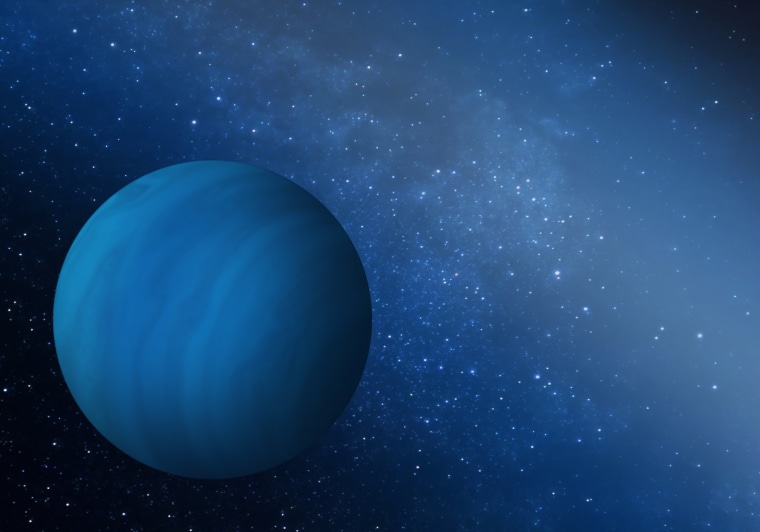Computer simulations suggest that a giant planet was kicked out of our solar system billions of years ago, saving Earth in the process. But how solid are those simulations?
The concept appears in a paper written by David Nesvorny, a researcher at the Southwest Research Institute, and published in The Astrophysical Journal Letters. His findings aren't based on the discovery of an actual Planet X, but instead are the result of thousands of simulations re-enacting the dynamical development of our planetary system.
Past simulations have shown that the solar system's current configuration is the result of a complex dance of the planets: About 600 million years into the solar system's existence, gravitational interactions caused a series of orbital shifts and scatterings. Astronomers believe that Jupiter moved inward and scattered many of the solar system's smaller bodies outward. Meanwhile, Saturn, Uranus and Neptune moved outward. Some models even suggest Uranus and Neptune switched places as they moved out.
This scenario explains phenomena ranging from the distribution of small bodies on the solar system's edge to the cratering rate on the moon. However, Jupiter's behavior in the model had to be tweaked: If Jupiter's orbit moved inward gradually, the giant planet would have stirred up the inner solar system too much. Earth's orbit could have been disrupted so much that it would have crashed into Mars or Venus.
"Colleagues suggested a clever way around this problem," Nesvorny said in a news release issued this week by the Southwest Research Institute. "They proposed that Jupiter's orbit quickly changed when Jupiter scattered off of Uranus or Neptune during the dynamical instability in the outer solar system."
This maneuver, known as the jumping-Jupiter hypothesis, would be less disruptive for the inner solar system. Nesvorny decided to test the idea by running billions of years' worth of simulations. He found that Jupiter did indeed do a quick orbital change as the result of gravitational encounters with Uranus or Neptune. But the encounters also scattered Uranus or Neptune all the way out of the solar system. "Something was clearly wrong," Nesvorny said.
Nesvorny ran the simulations again, this time with an additional giant planet that had a mass similar to that of Uranus and Neptune. Sure enough, Jupiter scattered the extra planet out of the solar system, and then quickly settled into an orbit that left the inner planets undisturbed. Nesvorny wrote that "it is roughly 10 times more likely to obtain a good solar system analog" if the extra planet is included.
How likely is it that a giant planet could be tossed out of the solar system? "This possibility appears to be conceivable in view of the recent discovery of a large number of free-floating planets in interstellar space, which indicates that planet ejection should be common," Nesvorny wrote.
No Planet X in sight
It's intriguing to imagine that there's a Planet X out there, cruising dejectedly through the interstellar wilderness. But so far, there's no empirical evidence to back up the theoretical claim.
"This paper is an example of what theorists do best: theorize," Alan Boss, a planetary scientist at the Carnegie Institution for Science, told me in an email. "The results are conceivable, but it is hard to imagine that they will be conclusive. There is a huge volume of possible initial conditions space for theorists to explore, and this is one particular example of an interesting possible path leading to a system similar to our own."
Boss said he was most concerned about the reference to the free-floating planets. He pointed out that the planets reported in the earlier research were around the mass of Jupiter, not Uranus or Neptune.
"That is not the situation being investigated [in Nesvorny's paper]. That is not to say that the scenario could not occur, but only that they cannot use the free-floating Jupiter-mass objects to support their scenario," he said. "If astronomers find lots of free-floating Neptune-mass objects, that would be another story."
More strange planetary tales:
- Three weird planets found around sunlike star
- Why odd alien planets travel in backward orbits
- Nearby stars could pose threat to solar system
- Don't fret over Planet X
Connect with the Cosmic Log community by "liking" the log's Facebook page, following @b0yle on Twitter or following the Cosmic Log Google+ page. You can also check out "The Case for Pluto," my book about the controversial dwarf planet and the search for new worlds.
